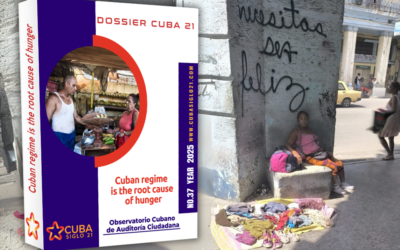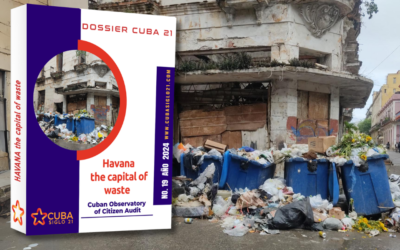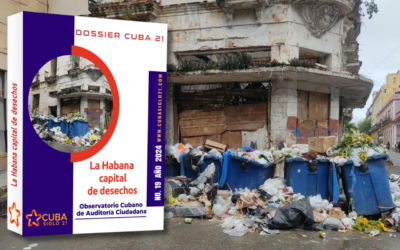To feed a Cuban with the basics, at least 30,000 pesos per month are needed. This explains why most Cubans can barely manage two meals a day and, in many cases, cannot even include protein in their diet. One Cuban Pesos equals 0.04 cents of US Dollars.

Sin campo no hay país y con GAESA no hay futuro
Para alimentar con lo básico a un cubano se necesitan al menos 30,000 pesos al mes. Esto explica por qué la mayoría de los cubanos apenas logra consumir dos comidas al día y, en muchos casos, ni siquiera pueden incluir proteínas en su dieta.
Crime in Cuba continues to rise. Public Insecurity Report 2024
While the government tries to minimize the importance of the amount of crimes committed, the fact is that criminal acts continue to increase, an increase of 50.72% in comparison to 2023.
La criminalidad en Cuba continúa en ascenso Informe de Inseguridad Pública 2024
Mientras el gobierno cubano intenta minimizar la importancia de su cuantía, el hecho es que los actos delictivos continúan en aumento, un incremento en 2024 del 50.72% en relacion a 2023.
Increase in crime in Cuba in 2024: Public Insecurity Report
During the first half of 2024 reveals a worrysome increase in crime compared to the same period of the previous year. In total, 432 crimes were reported between January and June 2024, representing a daily average of 2.37 crimes.
Incremento de los crímenes en Cuba en 2024: Informe de Inseguridad Ciudadana
El primer semestre de 2024 revela un preocupante aumento de la criminalidad en comparación con el mismo período del año anterior. En total, se reportaron 432 delitos entre enero y junio de 2024, lo que representa un promedio diario de 2.37 crímenes.
The rise of crime in Cuba 2023: Report of Public Insecurity
2023 was the year in which crime began to be recognized as a problem in Cuba. Throughout 2023, OCAC monitored and collected a total of 649 crime reports in Cuba, which is equivalent to almost two crimes per day.
El auge del crimen en Cuba 2023: Informe de Inseguridad Pública
El 2023 fue el año en que la criminalidad comenzó a ser reconocida como un problema en Cuba. A lo largo de 2023, el OCAC monitoreó y recopiló un total de 649 reportes de crímenes en Cuba, lo que equivale a casi dos crímenes por día.
Havana the capital of waste
In Havana, more than 7,600 m3 of garbage accumulates daily in public spaces near the homes and centers that generated it. TOn average, only 68% of the garbage is collected, while the rest remains in the streets creating sources of infection and even urban fires due to the production of methane gas.
La Habana capital de desechos
En La Habana se acumulan diariamente algo más de 7,600 m3 de basura en espacios públicos cercanos a las viviendas y centros que los generaron. Como promedio, se recoge solo el 68%, mientras el resto permanece en las calles creando focos de infección y hasta incendios urbanos por la producción de gas metano.










